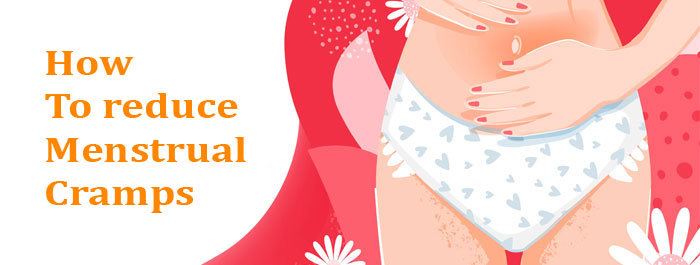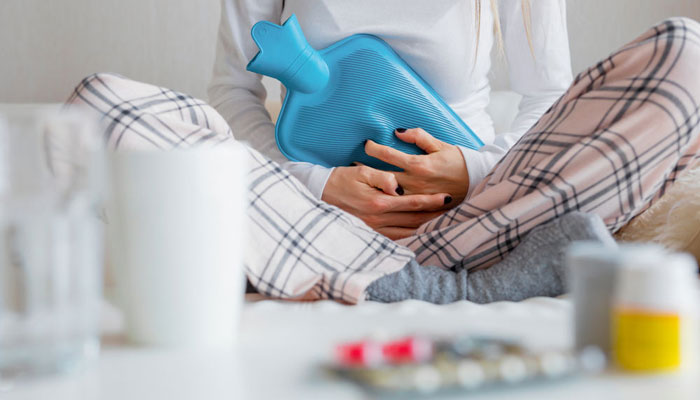
Menstruation Pain Relief
PMS remains a puzzle because of the wide-ranging symptoms and the difficulty in making a firm diagnosis. Several theories have been advanced to explain the cause of PMS. None of these theories has been proven and specific treatments for PMS largely lack a solid scientific basis. Most evidence suggests that PMS results from alterations in or interactions among the levels of sex hormones and brain chemical messengers known as neurotransmitters. Nonsteroidal anti-inflammatory drugs (NSAIDs) are the primary over-the-counter (OTC) form of pain relief recommended for menstrual pain and heavy menstrual bleeding. These drugs help lower your body’s production of prostaglandin. In most cases they are effective and can help reduce pain.
What are menstrual cramps?

Menstrual cramps are abdominal and pelvic pains experienced by a woman around the time of her menstrual period. Menstrual cramps usually start shortly before the menstrual period, peak within 24 hours after their onset, and subside after a day or two. Menstrual cramps can range from mild to severe. Mild menstrual cramps may be barely noticeable, short-lived, and are sometimes felt only as a sense of mild pressure in the abdomen and pelvis. Severe menstrual cramps can be so painful that they interfere with a woman's regular activities for several days. The discomfort can extend to the lower back or legs. Menstrual cramps are not the same as the symptoms experienced due to premenstrual syndrome (PMS), although the symptoms of both disorders can sometimes be experienced together. Many women suffer from both PMS and menstrual cramps.
Period Pain
Period Pain also called: Dysmenorrhea, Menstrual cramps, Menstrual pain. Menstruation, or period, is normal vaginal bleeding that happens as part of a woman's monthly cycle. Many women have painful periods, also called dysmenorrhea. The pain is most often menstrual cramps, which are a throbbing, cramping pain in your lower abdomen. You may also have other symptoms, such as lower back pain, nausea, diarrhea, and headaches. Period pain is not the same as premenstrual syndrome (PMS). PMS causes many different symptoms, including weight gain, bloating, irritability, and fatigue. PMS often starts one to two weeks before your period starts.
What causes painful periods?
There are two types of dysmenorrhea: primary and secondary. Each type has different causes.
Primary dysmenorrhea is the most common kind of period pain. It is period pain that is not caused by another condition. The cause is usually having too many prostaglandins, which are chemicals that your uterus makes. These chemicals make the muscles of your uterus tighten and relax, and this causes the cramps. The pain can start a day or two before your period. It normally lasts for a few days, though in some women it can last longer. You usually first start having period pain when you are younger, just after you begin getting periods. Often, as you get older, you have less pain. The pain may also get better after you have given birth.
Secondary dysmenorrhea often starts later in life. It is caused by conditions that affect your uterus or other reproductive organs, such as endometriosis and uterine fibroids. This kind of pain often gets worse over time. It may begin before your period starts, and continue after your period ends.
What can I do about period pain?
Treatment options vary and each woman needs to find the treatment that works best for her. Non-drug measures that may help include adequate rest and sleep, regular exercise (especially walking), and smoking cessation. Some women find that abdominal massage, yoga, or orgasmic sexual activity can help. A heating pad applied to the abdominal area may also relieve the pain.

The treatment of PMS can sometimes be as challenging as diagnosing the condition. Some measures lack a solid scientific basis but seem to help some women. Other treatments with a sound scientific basis may not help all patients. General measures include:
- Exercise: Aerobic exercise for 30 minutes 3-5 times a week improves general health and helps relieve nervous tension and anxiety. Exercise also improves cardiovascular fitness and muscle tone, decreases weight and fluid retention, and improves self-esteem.
- Emotional support from family and friends.
- Stress reduction and stress management: Learning relaxation techniques, and developing coping mechanisms to reduce stress.
- Dietary changes: Reduce salt and refined sugar intake (too much salt and refined sugar exacerbates fluid retention).
- Avoid caffeine, as this may increase irritability
- Decrease the intake of animal fats.
- Avoid cigarettes and alcohol.
Research studies have linked a deficiency of calcium and magnesium to PMS; therefore, it may be beneficial for woman to try supplements of these nutrients at recommended dosages. Some women have reported relief of symptoms with these supplements. It is always important to follow recommended guidelines when taking vitamin supplements, since taking excess doses of some supplements may be harmful.
What are the best medications to relieve painful menstrual cramps?

Here's some information to help you get ready. For mild menstrual cramps, over-the-counter (OTC) aspirin and acetaminophen (Tylenol) may help. However, aspirin has a limited effect in curbing the production of prostaglandin and is only useful for mild cramps. For moderate menstrual cramps, the nonsteroidal anti-inflammatory drugs (NSAIDs) can be helpful. The NSAIDs are more effective than aspirin in inhibiting the production and action of the prostaglandins.
Anti-inflammatory drugs (NSAIDs)
Over-the-counter NSAIDs available for the treatment of menstrual cramps include:
Prescription NSAIDs available for the treatment of menstrual cramps include:
For optimal control of menstrual cramps, a woman should start taking a NSAID before the onset of her pain becomes difficult to control. This might mean starting medication 1 to 2 days before the onset of her period and continuing the medication for the first 1 to 2 days of her period. The best results are obtained by taking one of the NSAIDs on a regular schedule rather than on an as needed basis. Therefore, ibuprofen should be taken every 4-6 hours and naproxen every 8-12 hours for the first few days of the menstrual flow.
Analgesics
Analgesics available for the treatment of menstrual cramps include:
- Naproxenacetaminophen (Tylenol)
If anti-inflammatory medicines do not relieve the pain, try acetaminophen (Tylenol). Keep taking the medicine for as many days as your cramps last. Do not take two or more pain medicines at the same time unless the doctor told you to. Too much acetaminophen (Tylenol) can be harmful.
Antidepressants
Antidepressants also prescribed by doctors to treat the mood disturbances related to PMS. Antidepressants appear to work by increasing brain chemical (serotonin and others) levels that are affected by the ovarian hormones.
Antidepressants available for the treatment of menstrual cramps include:
These are examples of antidepressant medications that have been found to be effective in treating the mood changes associated with PMS.
Guidelines for the safe use of medicines for menstrual cramps and PMS.
Always read the labels and know the ingredients in the products. Never take more than the recommended doses without first checking with your doctor. Aspirin and NSAIDs can cause ulcers and should be avoided by patients with peptic ulcer disease. They can also increase the risk of bleeding and should be avoided by women with certain blood diseases.
True aspirin allergy is rare. Aspirin allergy is most common among individuals who have asthma, hives, or nasal polyps. Individuals with true aspirin allergy should also avoid NSAIDs because they are chemically similar to aspirin. Most healthy adults tolerate NSAIDs well, but some may develop side effects such as headaches, dizziness, upset stomach, heartburn, poor appetite, constipation, or diarrhea. Taking these drugs with food can decrease the stomach upset and heartburn.
What you can do
If you have bothersome menstrual cramps, make an appointment with either your primary physician or a doctor who specializes in the female reproductive system (gynecologist).
When you have cramps, try taking a warm bath or applying a heating pad, hot water bottle or heat patch to your abdomen. Anti-inflammatory painkillers are often used to relieve period pain, especially the drugs diclofenac, ibuprofen and naproxen. These medications are all non-steroidal anti-inflammatory drugs (NSAIDs). They inhibit the production of prostaglandins and can relieve period pain in that way. Many NSAIDs are available from pharmacies without a prescription.